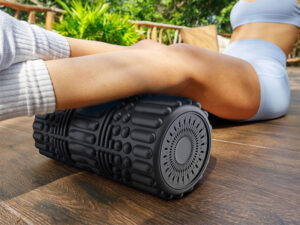A well-rounded fitness routine includes knowing about the importance of recovery after exercise. Every workout challenges our bodies and requires a carefully planned period of rest for repair and growth. This article dig into why recovery is so important as it supports long-term success, injury prevention, and overall well-being. I share insights that answer common questions like, “Why is rest important after exercise?” while highlighting why rest and recovery are essential for athletes and the important role of explicitly planned rest days.

The Role of Recovery in Building a Stronger Body
After a strenuous workout, the body gets to work repairing itself. Tiny tears in muscle fibers heal during recovery, leading to stronger and more resilient muscles. Without proper rest, these small injuries can accumulate and cause lingering pain or even more serious issues. Rest days are not idle moments; they are when the body actually builds strength.
This process isn’t just about taking a break. It gives our bodies a chance to reset and build up so that we return to our workouts with improved performance. The natural changes during recovery—restoring energy, repairing tissues, and balancing hormones—make it clear that rest is not a sign of weakness. Instead, it’s a fundamental part of any effective training plan.
Why Recovery is Essential for Athletes
Athletes often train at very high intensities, which makes proper recovery extremely important. Continuous high-intensity exercise without sufficient rest can lead to overtraining syndrome, marked by fatigue, reduced performance, and a higher chance of injuries. When athletes incorporate scheduled recovery, their muscles and nervous systems get the time they need to heal and adapt.
Regular rest prevents burnout and helps control stress hormone levels that, if elevated, can hinder performance in sports and daily activities. I have noticed that including adequate rest makes my workouts more efficient, leaving me more energetic and less injury prone. In this way, rest days are a planned part of the training schedule that help optimize both physical and mental performance.
Furthermore, recovery helps manage inflammation—a natural outcome of intense exercise. Many athletes use techniques such as light stretching, foam rolling, and even passive recovery sessions, like a walk, on off days to reduce inflammation and prepare for future challenges.
Why is Rest Important After Exercise?
After pushing through a tough workout, the body launches a detailed process of protein synthesis to rebuild and strengthen muscle fibers. Exercise naturally creates tiny disruptions in muscle tissue that require time to mend. Without enough rest, these tears may not heal completely, leading to persistent fatigue and poorer performance over time.
Rest is also crucial for replenishing energy stores like glycogen, which gets depleted during exercise. By allowing the body time to properly refuel, nutrients from food can fully restore these energy reserves. Additionally, rest plays a role in balancing hormone levels; intense workouts can temporarily spike stress hormones like cortisol. When recovery is insufficient, this imbalance might affect overall mood and immune function, leaving you feeling more stressed and unmotivated.
The Importance of Rest Days
In my experience, scheduling regular rest days is one of the most effective strategies for long-term progress. Rest days are planned breaks where the body is given the opportunity to recover and reset. They are not simply free days but are strategic pauses aimed at reducing fatigue and preventing overuse injuries.
During these rest periods, muscles rebuild and flexibility can improve, and I often feel mentally rejuvenated. Skipping rest days may lead to higher soreness, lower performance in subsequent workouts, and even setbacks in training. It isn’t just about racking up reps; it’s about achieving a balance that lets both body and mind regenerate.
Rest days also offer a chance to pause and plan for future workouts. For athletes, taking a break is not an admission of defeat but a savvy move to maintain long-term health and consistent progress.
The Importance Of Recovery After Exercise: Effective Recovery Strategies
Proper recovery involves more than just taking a day off. I’ve experimented with various strategies to speed up my body’s healing process after exercise. Hydration is key, as replenishing fluids helps restore balance, supports nutrient transport, and reduces muscle soreness.
Nutrition is very important too. After exercising, the body craves proteins and carbohydrates needed for repairing muscle fibers and restoring energy. Consuming lean proteins along with healthy carbohydrates soon after a workout can speed up recovery considerably. Quality sleep also plays a major role; it allows for cellular repair and optimal hormone regulation, setting the stage for better performance the next day.
Additional techniques such as foam rolling, gentle stretching, and light movement on off days help maintain blood flow and reduce muscle tension. Many athletes, myself included, benefit from massage therapy or hydrotherapy techniques like warm baths and contrast showers, which ease muscle stiffness and promote quicker recovery.
Get Compression Boots and Vibrating Foam Rollers here.

Integrating mindfulness or meditation into a daily routine can help alleviate mental fatigue. When the mind is tired, recovery feels incomplete. Moments of calm not only benefit physical healing but also sharpen focus, ensuring that every subsequent workout is approached with a clear mindset.
Overcoming Common Recovery Challenges
Even with good intentions, proper recovery can be challenging. Overtraining occurs when there isn’t enough time for the body to heal between intense workouts, leading to prolonged fatigue and persistent muscle soreness along with declining performance.
Listening to your body is very important. If you notice unusual weakness or find your regular routines are becoming too difficult, it may be time to reexamine your recovery plan. I have often found that easing up on training intensity while prioritizing hydration and nutrition makes a significant difference.
There is also a common misconception that recovery means doing absolutely nothing. In reality, active recovery—which includes gentle activities like walking, yoga, or easy cycling—helps maintain blood flow and prevent muscle stiffness. These light movements can go a long way toward keeping your body flexible and ready for the next session.
Modern life can interfere with sleep, which is essential for recovery. Taking steps to improve sleep habits—such as turning off electronic devices before bed, keeping the room cool, and establishing a relaxing bedtime routine—has helped me get the rest I need and avoid overtraining.
Ultimately, overcoming recovery challenges comes down to recognizing early signs of fatigue. Keeping a training journal to track how you feel after workouts can help you decide when to take a step back and allow your body the rest it needs.
Advanced Recovery Tips for Steped Up Performance
Once you have the basics in place, there are a few advanced strategies that can take performance up a notch. One effective approach is to focus on individualized recovery plans. Since every body reacts in its own way to exercise, tailoring recovery methods to personal needs can yield better results. Techniques such as deep tissue massages or wearing compression garments may offer additional support for some athletes.

Active recovery remains a key strategy. Light, low-intensity movements on rest days can help keep muscles flexible and clear away metabolic waste from previous workouts. Whether it’s gentle yoga or casual swimming, these activities aid in muscle recovery while calming the mind.
In addition, scheduling periodic deload weeks—where workout intensity is significantly reduced—can provide the extra time needed for recovery from accumulated training stress. This break helps prepare the body for the next cycle of tough workouts.
This is especially true for runners preparing for a race. Training load needs to decrease in the couple of weeks leading up to the race to allow the body to recover and repair after a heavy training load so that one gets to the start line strong and injury-free. This is called the taper.
Even at an advanced level, nutrition is very important. Including anti-inflammatory foods such as berries, fatty fish, and leafy greens in your diet can help reduce exercise-induced inflammation. Under proper guidance, supplements like omega-3 fatty acids or magnesium may also support muscle repair and overall recovery.
Technology now offers helpful recovery tools. Devices like sleep trackers and heart rate monitors provide insights into how well your body is recovering. Using these tools helps me decide whether it’s time to push a little harder or to take it easy and let my body recover more fully.
Frequently Asked Questions
Question: Why is rest important after exercise?
Answer: Rest allows muscles to repair, energy to be replenished, and hormones to balance. Without proper rest, you run the risk of fatigue, decreased performance, and injury.
Question: What are some effective recovery techniques?
Answer: Effective techniques include staying well hydrated, eating a balanced meal after workouts, getting quality sleep, and engaging in light physical activities like stretching or yoga on rest days. Many also find massage therapy beneficial.
Question: How does active recovery differ from complete rest?
Answer: Active recovery involves low-intensity activities that boost blood flow and ease muscle tension, while complete rest means minimal physical activity. Both methods are useful depending on your individual needs.
Question: How do I know if I’m not recovering enough?
Answer: Signs such as persistent soreness, prolonged fatigue, stagnant performance, and mood shifts indicate that your body might not be getting enough recovery time. It’s important to adjust your routine accordingly.
Bringing It All Together
Throughout my fitness adventure, I have learned that recovery is a vital driver for growth and progress. Training is only one side of the equation—the benefits truly come during down time when the body processes stress and transforms it into strength and endurance. Rest days serve as a reminder that it isn’t just about pushing limits every day. They create the balance needed for both physical and mental regeneration.
Every athlete, whether new to exercise or a seasoned pro, gains from incorporating proper recovery into their routine. Your results depend greatly on how well you let your body heal and rebuild after intense workouts. Taking a thoughtful approach to recovery can help you overcome fatigue, break through performance plateaus, and progress steadily toward your fitness goals.
Instead of viewing rest as wasted time, see it as a strategic component that underpins effective training. When you invest in recovery, you build a stronger, more resilient body ready to face new challenges head on.
Final Thoughts
Reflecting on my fitness experience, I believe that the art of recovery is very important. Allowing your body the time it needs to heal isn’t a shortcut; it’s the foundation for lasting progress. Every athlete benefits when rest and rejuvenation are taken as seriously as active training.
Understanding why rest matters, recognizing the power of well-planned rest days, and applying effective recovery techniques can lead to improved performance, fewer injuries, and a more enjoyable overall training experience. I encourage you to view recovery as a critical part of your fitness plan that prepares you to meet your next challenge with energy and clarity.
Give yourself permission to rest and appreciate that every break moves you closer to your fitness goals. With each day of proper recovery, you build a body that is not only stronger but also more prepared for whatever comes next.
A wonderful way to aid recovery is through massage. Compression Boots can be a great way to achieve this and Ublives deliver a great paid called The SoleFlux Relax. The SoleFlux Relax works by using air pressure to mimic the actions of a massage therapist. See more by clicking below.
The SoleFlux Relax Compression Boots.
Here’s a little transparency: Our website contains affiliate links. This means if you click and make a purchase, we may receive a small commission. Don’t worry, there’s no extra cost to you. It’s a simple way you can support our mission to bring you quality content.
Women’s Day Special: Save $599 on Ublives Compression Boots
Taking a Magnesium supplement is excellent for recovery of your muscles after exercise. It also helps with sleep. This is something that I take every day.
Read next: WellCo’s HydroProtein Elixir Review
